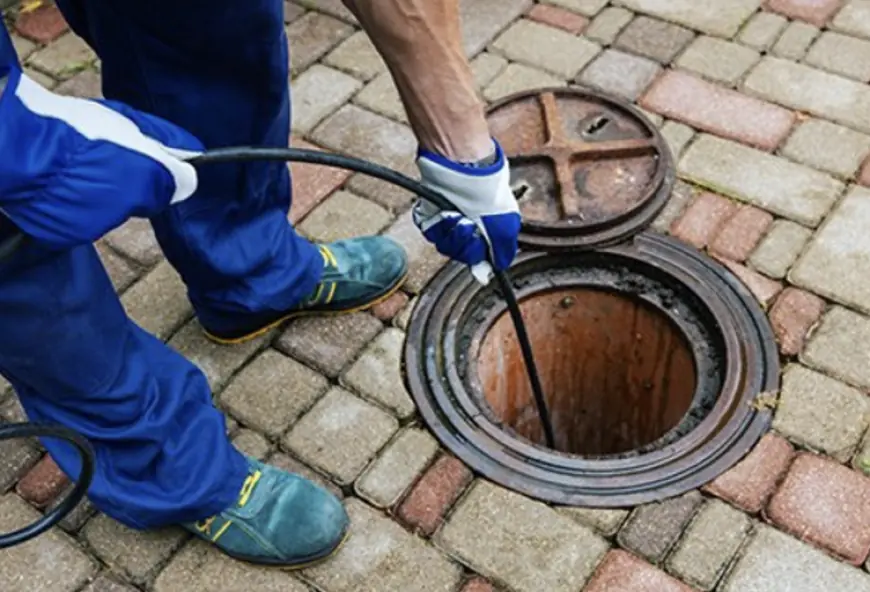Top Signs of Blocked Drains You Should Never Ignore

Blocked drains can disrupt your home’s functionality and lead to costly repairs if not addressed promptly. While some drain issues may seem minor at first, ignoring the warning signs can cause significant damage over time. Recognizing the symptoms early can save you from unnecessary headaches and expenses. Here are the top signs of blocked drains you should never ignore.
1. Slow Draining Water
One of the first and most noticeable signs of a blocked drain is water draining slower than usual. Whether it’s in the sink, shower, or bathtub, this issue indicates that something is obstructing the water flow.
Common causes of slow drainage include:
-
Hair and soap scum buildup in bathroom drains.
-
Food particles and grease clogging kitchen sinks.
If you notice water pooling for longer periods, it’s time to investigate further or call a professional plumber.
2. Gurgling Sounds
Unusual noises, such as gurgling, coming from your pipes are another indicator of a blockage. These sounds occur when air is trapped in the pipes due to a partial obstruction. You might hear gurgling from:
-
Toilets when you flush.
-
Sinks or showers after use.
These noises often precede complete blockages, so addressing them early can prevent more severe issues.
3. Foul Odors
A bad smell emanating from your drains is a major red flag. It usually points to decomposing organic material, grease, or food trapped in the pipes. If left unattended, the buildup can lead to more severe blockages and even attract pests.
Foul odors are especially common in:
-
Kitchen sinks due to food scraps.
-
Bathroom drains from hair and soap buildup.
Using drain-cleaning products or contacting a professional plumber can help eliminate the source of the smell.
4. Water Backing Up
Water backing up in your sink, shower, or toilet is a clear sign of a blockage. This issue often occurs when the clog is severe, causing water to flow in the opposite direction.
For instance:
-
Flushing the toilet might cause water to rise in the shower drain.
-
Running water in the sink may lead to bubbling in the toilet.
Backed-up water can pose health risks due to contamination, so it’s essential to address this issue promptly.
5. Overflowing Toilets
An overflowing toilet is one of the most distressing signs of a blocked drain. This issue usually occurs when there’s a clog in the toilet itself or the main sewer line.
Common causes include:
-
Flushing non-flushable items like wet wipes, sanitary products, or excessive toilet paper.
-
Tree roots infiltrating the sewer pipes.
If your toilet overflows frequently, it’s best to contact a plumber to inspect the underlying cause.
6. Puddles in the Yard
Unexplained puddles or soggy patches in your yard can indicate a blockage in the underground drainage or sewer system. When wastewater is unable to flow through the pipes, it may seep into the surrounding soil, creating wet areas.
This issue could stem from:
-
Cracked or broken pipes.
-
Tree roots obstructing the sewer lines.
These problems require immediate attention, as they can lead to severe property damage and health hazards.
7. Frequent Clogs
If you find yourself constantly dealing with clogs in the same drain, it’s a sign of a deeper issue. Recurrent blockages often indicate that there’s a larger problem within the plumbing system, such as a partially blocked sewer line.
Temporary fixes like using a plunger or drain cleaner may provide short-term relief, but they won’t address the root cause.
8. Changes in Water Pressure
Blocked drains northern beaches can sometimes affect water pressure in your home. If you notice that the water flow is weaker than usual, it may indicate a blockage restricting the movement of water through the pipes.
Low water pressure can also signal issues with the main water supply or leaks, so it’s crucial to have the system checked.
9. Standing Water
Water that refuses to drain and pools in sinks, tubs, or showers is a severe sign of a blockage. Standing water not only disrupts daily activities but can also become a breeding ground for bacteria and mold.
This problem often requires professional intervention, as it suggests a complete obstruction in the pipes.
10. Structural Damage
In extreme cases, blocked drains can cause structural damage to your home. Overflowing water can seep into floors, walls, and foundations, leading to cracks, mold growth, and even weakening the structural integrity of your property.
If you notice any unexplained dampness, peeling paint, or mold patches, it’s essential to inspect your plumbing system for blockages.
Why You Should Act Quickly
Blocked drains are more than just a minor inconvenience; they can escalate into serious plumbing emergencies if left untreated. Acting quickly not only prevents costly repairs but also protects your home and family from:
-
Health hazards caused by contaminated water.
-
Property damage due to leaks and flooding.
-
Pest infestations are attracted by stagnant water and waste.
How to Address Blocked Drains
Here’s what you can do if you suspect a blockage:
-
Use a plunger to remove minor clogs.
-
Avoid using chemical drain cleaners, as they can damage pipes.
-
Try a drain snake for more stubborn blockages.
-
If the problem persists, contact a professional plumber to diagnose and resolve the issue.
Conclusion
Blocked drains northern beaches can cause significant inconvenience and damage if not addressed promptly. Recognizing the signs early, such as slow drainage, foul odors, and water backups, can save you time, money, and stress. Regular maintenance and professional plumbing inspections can keep your drains clear and your home functioning smoothly.
Don’t ignore the warning signs—act now to protect your home and plumbing system.












